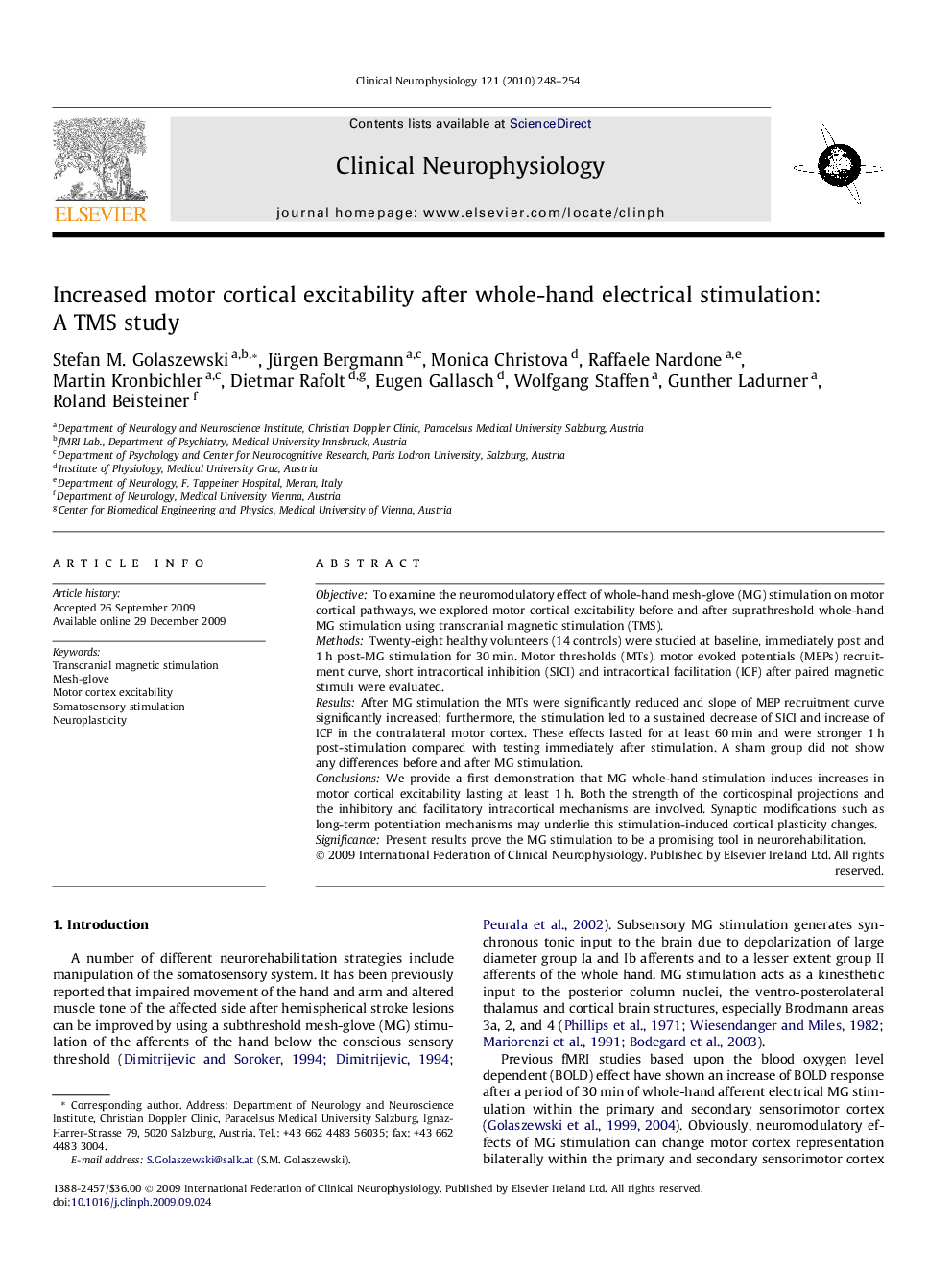| Article ID | Journal | Published Year | Pages | File Type |
|---|---|---|---|---|
| 3045329 | Clinical Neurophysiology | 2010 | 7 Pages |
ObjectiveTo examine the neuromodulatory effect of whole-hand mesh-glove (MG) stimulation on motor cortical pathways, we explored motor cortical excitability before and after suprathreshold whole-hand MG stimulation using transcranial magnetic stimulation (TMS).MethodsTwenty-eight healthy volunteers (14 controls) were studied at baseline, immediately post and 1 h post-MG stimulation for 30 min. Motor thresholds (MTs), motor evoked potentials (MEPs) recruitment curve, short intracortical inhibition (SICI) and intracortical facilitation (ICF) after paired magnetic stimuli were evaluated.ResultsAfter MG stimulation the MTs were significantly reduced and slope of MEP recruitment curve significantly increased; furthermore, the stimulation led to a sustained decrease of SICI and increase of ICF in the contralateral motor cortex. These effects lasted for at least 60 min and were stronger 1 h post-stimulation compared with testing immediately after stimulation. A sham group did not show any differences before and after MG stimulation.ConclusionsWe provide a first demonstration that MG whole-hand stimulation induces increases in motor cortical excitability lasting at least 1 h. Both the strength of the corticospinal projections and the inhibitory and facilitatory intracortical mechanisms are involved. Synaptic modifications such as long-term potentiation mechanisms may underlie this stimulation-induced cortical plasticity changes.SignificancePresent results prove the MG stimulation to be a promising tool in neurorehabilitation.
